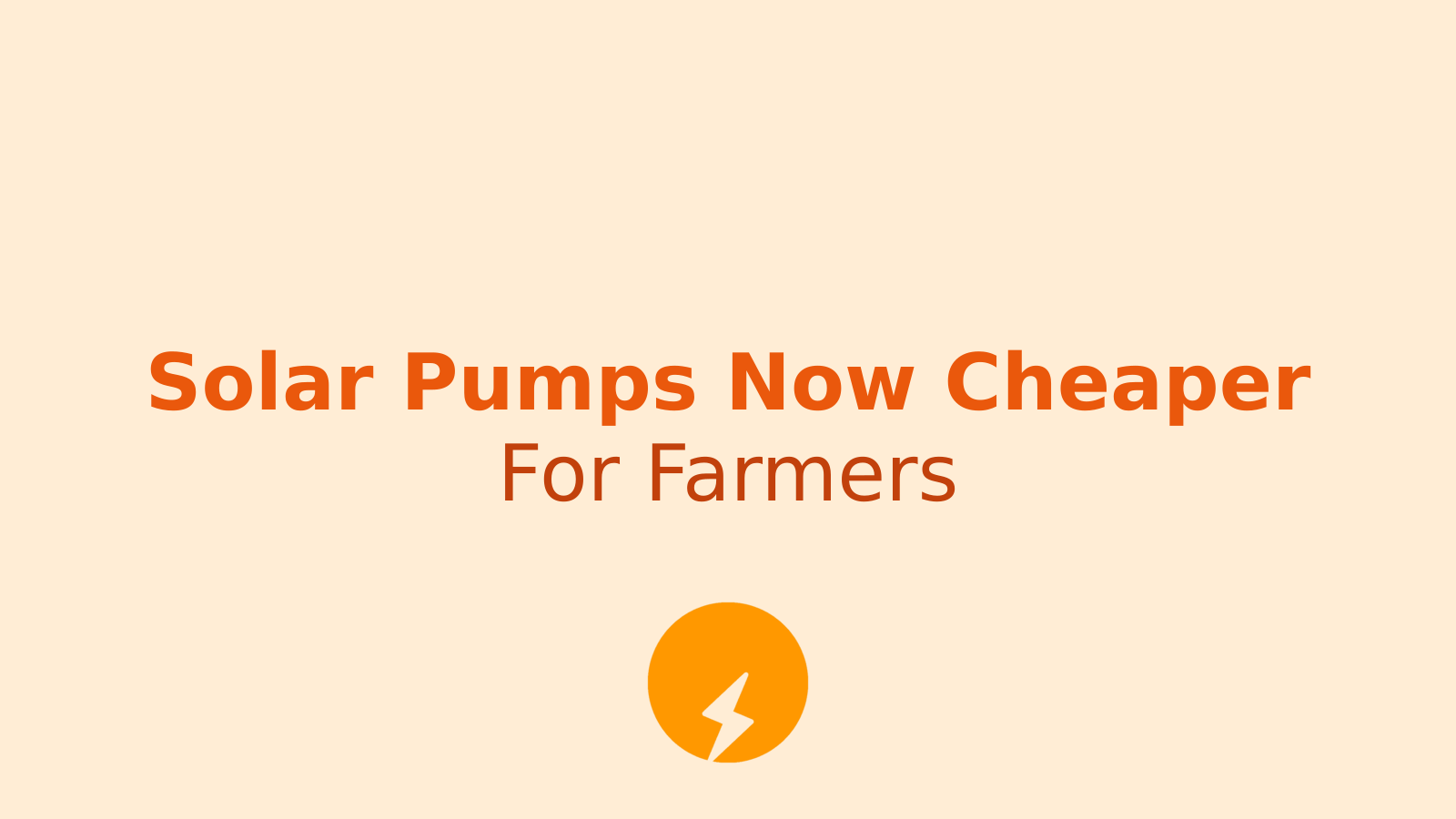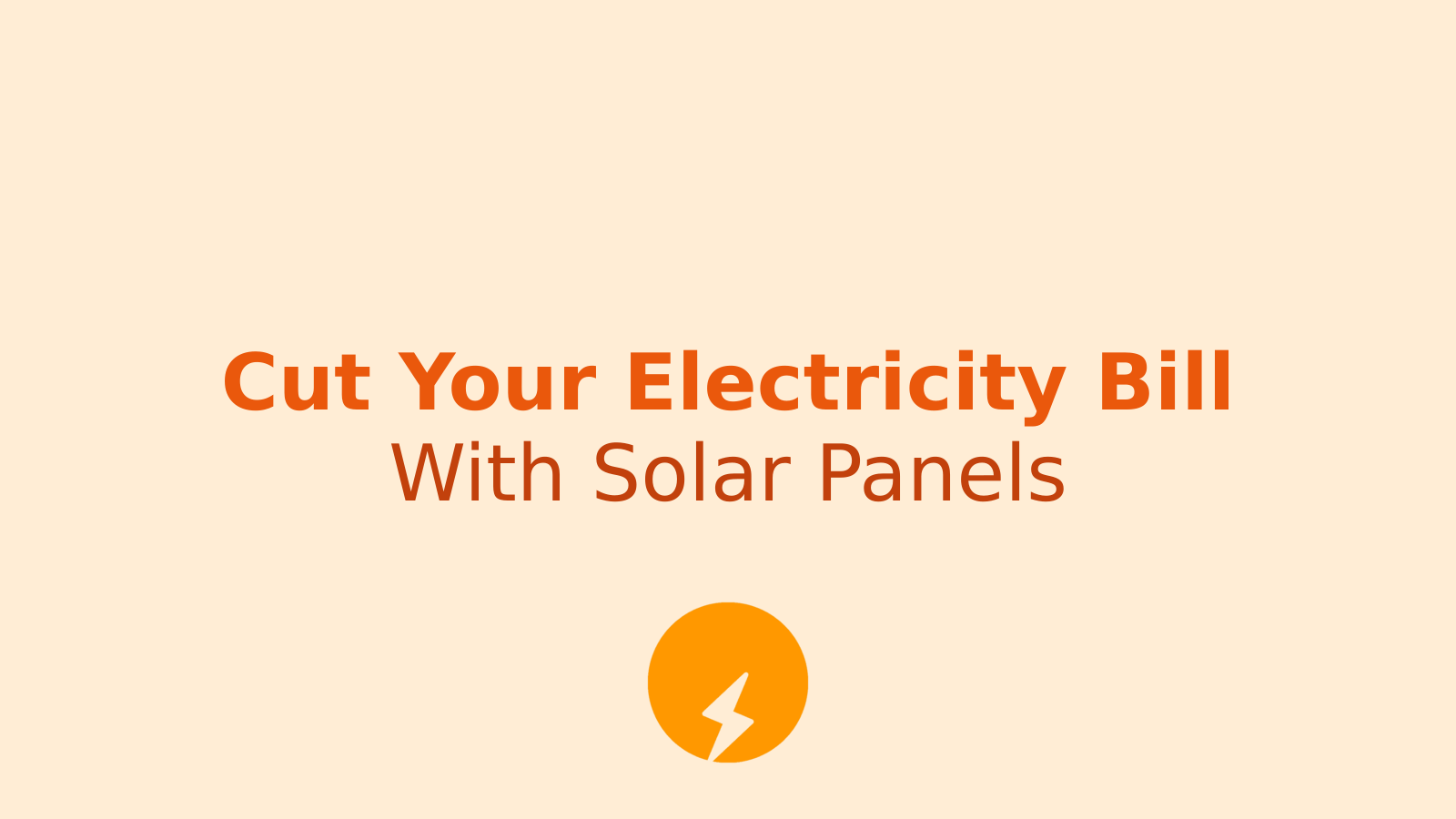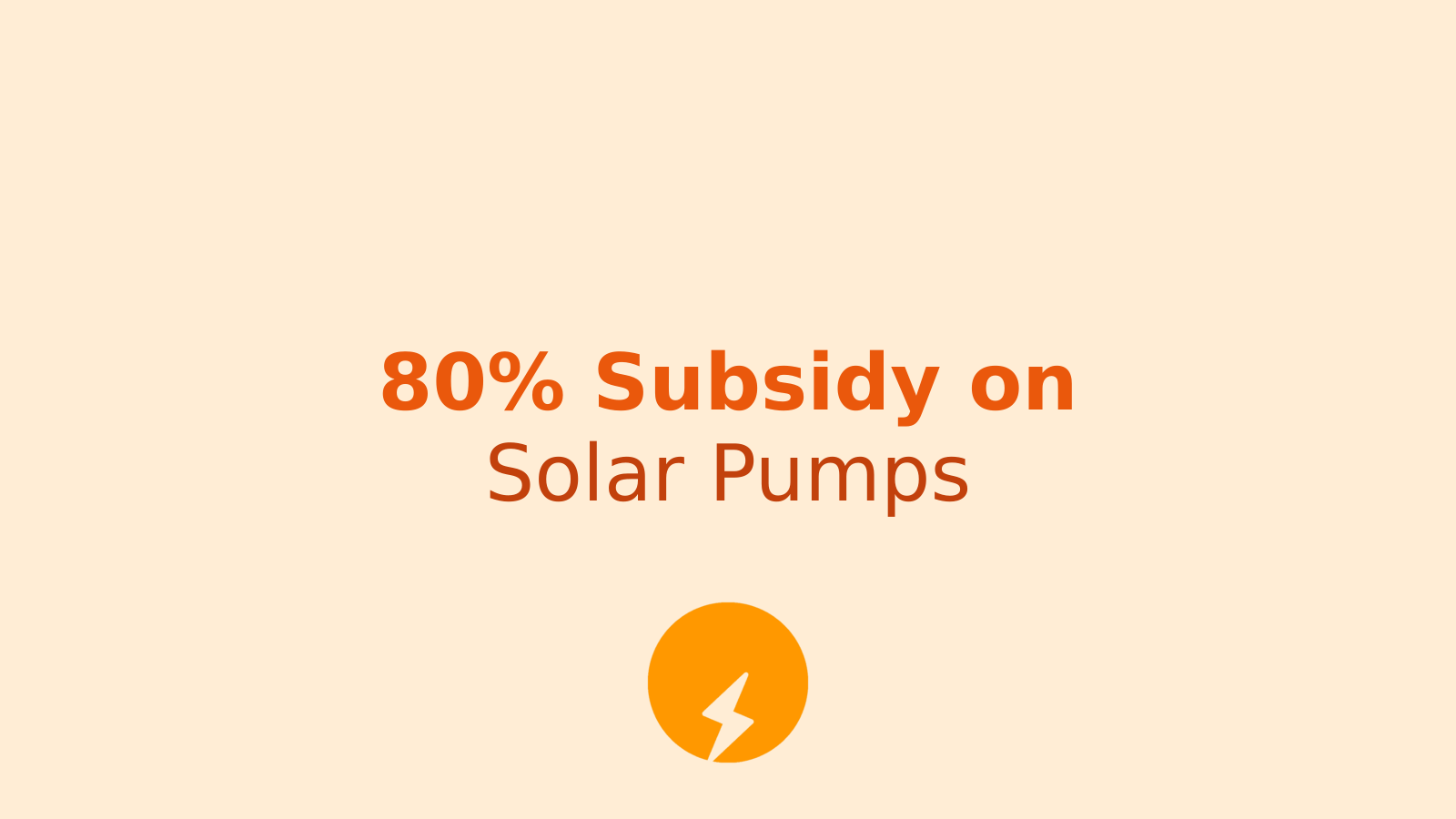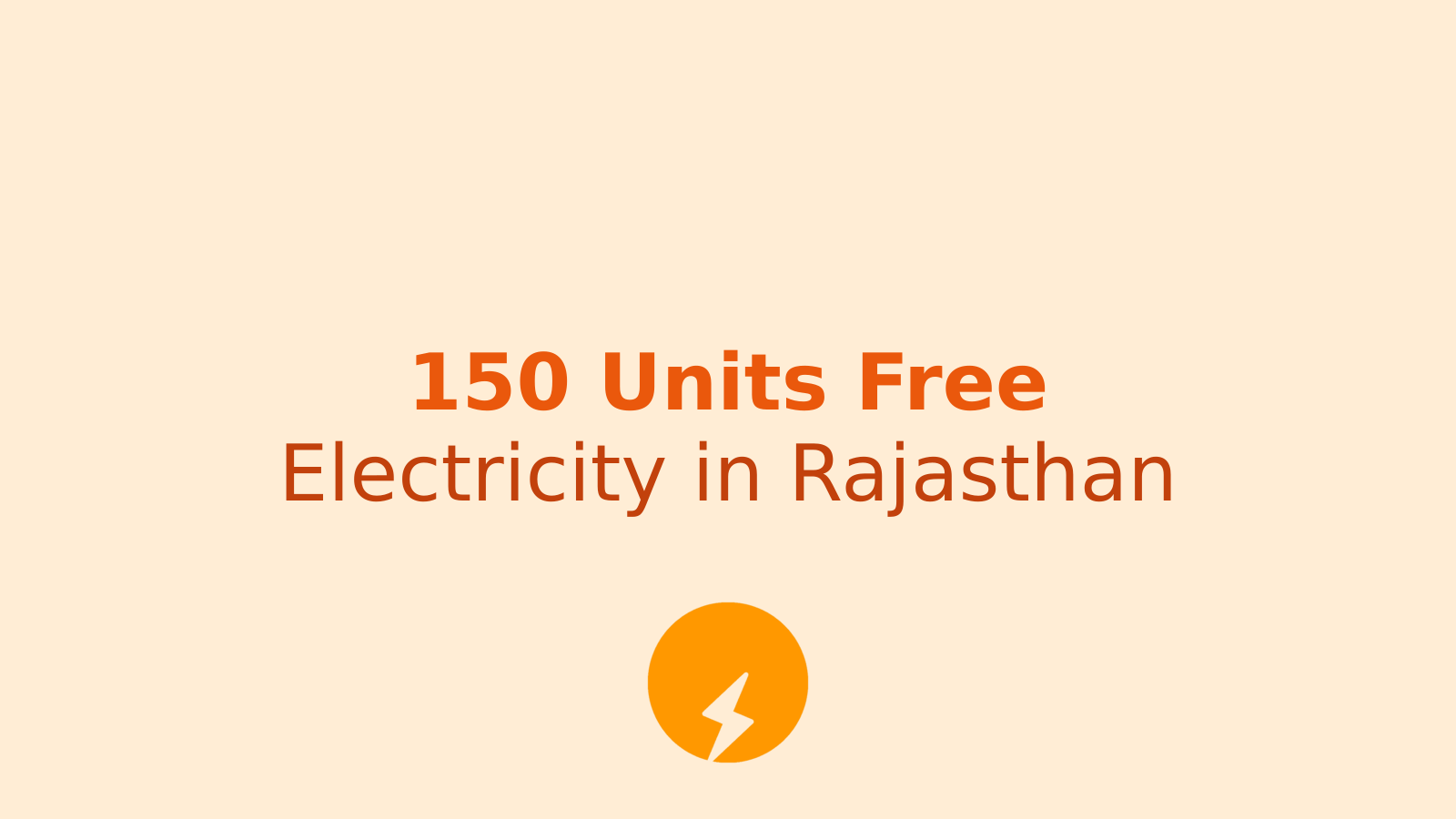If you are a farmer looking to install a solar pump on your farm, there is good news for you. The PM Kusum Scheme has just become more affordable, and you could save thousands of rupees.
The central government recently reduced GST rates on solar equipment, making solar pumps cheaper for farmers across India. This change came into effect on 22 September, and farmers in Jhunjhunu district of Rajasthan are already benefiting from it.
How Much Money Will You Save?
The GST reduction brings direct savings to farmers. Depending on the pump capacity you choose, you can save between ₹4,209 and ₹7,811 on each solar pump installation.
This happened because the GST rate on controllers and other equipment dropped from 12% to 5%. While this might sound like a small change, it makes a real difference when you calculate the total cost of installing a solar pump.
The Horticulture Department has confirmed that contracted companies have already sent revised guidelines. Farmers can now deposit their share of the amount according to the new rates.
What If You Already Paid the Old Rate?
Some farmers had already deposited money before the GST rates changed. If you paid according to the old rates and your bill was not issued before 22 September 2025, you will get your extra money back.
The department will issue a revised approval and return the additional amount. This ensures that every farmer benefits from the reduced rates, regardless of when they applied.
Understanding the PM Kusum Scheme
The PM Kusum Scheme helps farmers install solar pumps on their agricultural land. The government provides a 60% subsidy on the total cost. This means if a solar pump costs ₹1,00,000, you only need to pay ₹40,000 from your pocket.
For farmers belonging to SC and ST categories, there is an additional benefit. They receive an extra ₹45,000 as financial assistance on top of the 60% subsidy. This makes solar pumps even more affordable for farmers from these communities.
The scheme aims to reduce the dependence on diesel pumps and electricity. Solar pumps run on sunlight, which is free and abundant in most parts of India. Once installed, your operational costs drop significantly.
Progress in Jhunjhunu District
The Jhunjhunu district received a target of installing 1,500 solar pumps this year. So far, 295 farmers have already installed solar pumps on their farms.
Vijay Pal Kaswan, Deputy Director of the Horticulture Department in Jhunjhunu, confirmed that the GST revision has brought relief to farmers. He stated that the department is working to help more farmers install solar pumps and meet the annual target.
The revised rates make it easier for farmers to afford these pumps, and the department expects more applications in the coming months.
Who Can Apply for the Scheme?
Not every farmer qualifies for the PM Kusum Scheme. There are specific eligibility criteria you need to meet:
Land Ownership: You must own at least 0.40 hectares of agricultural land. This is roughly one acre. The scheme is designed for farmers who have enough land to justify a solar pump installation.
No Existing Electricity Connection: If you already have an electricity connection for agricultural purposes, you cannot apply for this scheme. The scheme targets farmers who face power shortages or have no access to grid electricity.
No Previous Subsidy: If you have already received a subsidy for a solar pump under any government scheme, you are not eligible to apply again. The scheme ensures that benefits reach new beneficiaries.
Category Benefits: Farmers from SC and ST categories receive additional financial support of ₹45,000 along with the standard 60% subsidy.
Documents You Need to Apply
The application process requires specific documents. Make sure you have these ready before you start:
- Jan Aadhaar Card: This is your primary identity document for government schemes in Rajasthan.
- Latest Jamabandi: This is your land ownership document. It should be recent and clearly show that you own the land.
- Land Map (Naksha): A map showing the location and boundaries of your land.
- Self-Declaration: A sworn statement declaring that you meet all eligibility criteria.
Keep digital copies of these documents ready. The application process is online, and you will need to upload these files.
How to Apply Online
The application process is simple if you follow these steps:
Step 1: Visit the Kisan Raj Kisan Saathi Portal. This is the official portal for agricultural schemes in Rajasthan.
Step 2: Register yourself if you are a new user. You will need your mobile number and Jan Aadhaar details.
Step 3: Log in to your account and find the PM Kusum Scheme section.
Step 4: Fill in the application form carefully. Provide accurate information about your land, location, and personal details.
Step 5: Upload all required documents. Make sure the files are clear and readable.
Step 6: Submit your application and note down the application number for future reference.
After submission, your application goes through a verification process. Officials check your documents and conduct a technical survey of your land.
What Happens After You Apply?
Once you submit your application, the department reviews it. If there are any issues with your documents, they will send the application back to you online.
You have a maximum of 30 days to correct the mistakes and resubmit. Make sure you respond quickly to avoid delays.
If your application is approved, a technical survey team visits your farm. They assess the water availability, sunlight exposure, and other factors. Based on this survey, they determine the capacity and type of solar pump suitable for your land.
The survey ensures that you get a pump that matches your actual requirements. A pump that is too small will not meet your irrigation needs, while an oversized pump wastes money.
Technical Survey and Pump Selection
The technical survey is an important step. The survey team checks several factors:
Water Source: They identify the water source on your land, whether it is a well, borewell, or pond.
Water Depth: The depth of water determines the pump capacity you need. Deeper water requires more powerful pumps.
Sunlight Availability: Solar pumps need adequate sunlight. The team checks if your location receives enough sun throughout the year.
Land Topography: The slope and layout of your land affect pump installation and water distribution.
Based on these factors, the team recommends a pump. You can discuss with them if you have specific requirements or concerns.
How Much Will You Pay?
With the 60% subsidy, you pay only 40% of the total cost. Let me give you an example to make this clear.
Suppose a 5 HP solar pump costs ₹2,50,000. With a 60% subsidy, the government pays ₹1,50,000. You pay ₹1,00,000.
Now, with the GST reduction, your share drops further. You save up to ₹7,811 on the same pump. So instead of paying ₹1,00,000, you might pay around ₹92,189.
For SC and ST farmers, the deal gets even better. You receive an additional ₹45,000, bringing your effective cost down to around ₹47,189 for the same pump.
Why Solar Pumps Make Sense
Many farmers wonder if solar pumps are worth the investment. Let me share some practical benefits.
No Electricity Bills: Once installed, a solar pump runs on sunlight. You never pay electricity bills again for irrigation.
No Diesel Costs: Diesel pumps are expensive to run. Diesel prices keep rising, but sunlight remains free.
Reliable Water Supply: In areas with power cuts, solar pumps provide consistent water supply during sunny days.
Low Maintenance: Solar pumps have fewer moving parts than diesel pumps. They require less maintenance and last longer.
Environment Friendly: Solar pumps produce no pollution. They help you farm in a sustainable way.
Over a period of 5 to 7 years, a solar pump typically pays for itself through savings on electricity and diesel. After that, you enjoy free irrigation for many more years.
Common Mistakes to Avoid
Based on experiences of farmers who have applied, here are some common mistakes you should avoid:
Incomplete Documents: Many applications get rejected because of missing or unclear documents. Double-check everything before uploading.
Wrong Land Details: Make sure the land details in your application match your ownership documents exactly. Even small differences can cause rejection.
Ignoring Returned Applications: If your application is returned for corrections, respond within 30 days. Missing this deadline means starting over.
Not Attending the Survey: Be present when the technical team visits your farm. Your input helps them recommend the right pump for your needs.
Choosing Wrong Pump Size: Some farmers want larger pumps than they need. Trust the technical survey team. They recommend based on scientific assessment.
Tips for a Successful Application
Here are some practical tips to improve your chances of approval:
Keep your Jan Aadhaar card updated with current information. Any mismatch between documents creates problems.
Get a recent Jamabandi from the revenue office. Documents older than six months might not be accepted.
Take clear photos or scans of your documents. Blurry images lead to rejections.
Apply early in the financial year. Funds are limited, and applications are processed on a first-come basis.
Keep your mobile number active. The department sends updates and calls for surveys on the number you provide in the application.
What Farmers Are Saying
Farmers who have installed solar pumps under the scheme share positive experiences. Many report significant savings on their monthly expenses.
One farmer mentioned that he used to spend ₹3,000 every month on diesel. After installing a solar pump, that cost dropped to zero. The pump paid for itself in less than three years.
Another farmer appreciated the reliability. Power cuts no longer affect his irrigation schedule. He can water his crops whenever needed, as long as the sun is shining.
The additional benefit for SC and ST farmers has made a real difference. Many farmers from these communities could not afford the 40% contribution earlier. The extra ₹45,000 made it possible for them to participate in the scheme.
Looking Ahead
The GST reduction is a positive step. It shows that the government is listening to farmers and making schemes more accessible.
With solar technology improving every year, pumps are becoming more efficient and durable. The current generation of solar pumps can last 20 to 25 years with minimal maintenance.
As more farmers adopt solar pumps, the demand for diesel and grid electricity for agriculture will decrease. This benefits not just individual farmers but the entire farming community and the environment.
Take Action Now
If you are eligible for the PM Kusum Scheme, this is a good time to apply. The reduced GST rates mean you save more money than ever before.
Start by gathering your documents. Visit the Kisan Raj Kisan Saathi Portal and complete your application. The process might seem complicated at first, but it is straightforward once you start.
If you face any difficulties, visit your local Horticulture Department office. Officials can guide you through the process and answer your questions.
Remember that the scheme has limited slots. In Jhunjhunu, only 1,500 pumps are being installed this year. The sooner you apply, the better your chances of approval.
Solar pumps represent a smart investment in your farm's future. Lower costs, reliable water supply, and zero operational expenses make them an attractive option for modern farmers.
The PM Kusum Scheme, combined with the recent GST reduction, makes this technology accessible to more farmers than ever before. Take advantage of this opportunity and give your farm the gift of sustainable, cost-free irrigation.
Read more articles in News & Updates Category or in Oct 2025 Month





